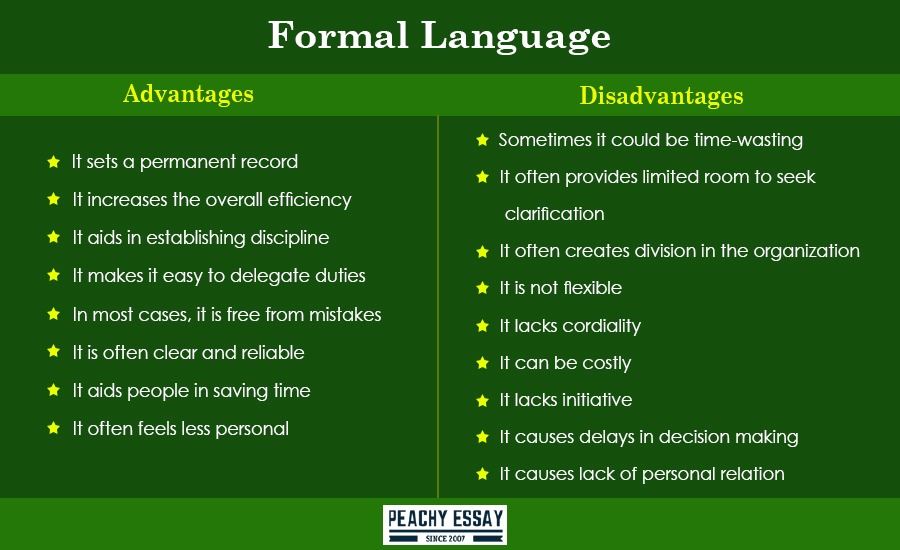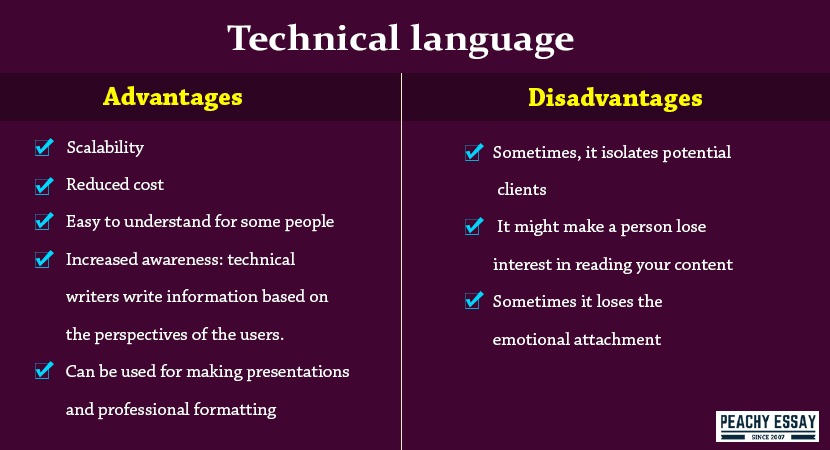Language plays an essential role when it comes to communicating ideas and information. By definition, language consists of a collection of conventional written or spoken symbols, which human beings use to express their thoughts or themselves in general. The common uses of language include; releasing emotions, expressing imaginative ideas and identity, and communication.
One of the most essential things writers should put into consideration whenever they are writing is ensuring that the language used not only matches the intended objective but also fits the audience. Apparently, the use of inappropriate language could undermine the writer`s argument, ruin their credibility, and make the audience lose interest in reading your content. If you want to reach a wider audience, you must ensure that you always use appropriate language.
Whenever the writer wishes to create the right tone, atmosphere, and mood, they must pay special attention to their language. The language used by a writer depends on what they would wish to attain at a particular point in time. The literal meaning of the terms used, the images they create, and the sound of those words meant to denote a particular meaning, all play an essential role. There are a lot of things writers must put into consideration when they want to communicate a particular idea.
To come up with excellent content, you must not only think of what you are going to speak or write but also the way you will say it. For the writer to communicate effectively, they will need to develop ideas that are expressed in an organized way. The paragraphs must also be well-organized and coherent. It is essential to take time to think about the clarity, tone, organization, and style of their writing. One of the essential things when it comes to writing effectively is analysing an individual`s purpose and audience. For a writer to settle for the most effective language, they must take their time to think about the primary purpose of the document, their audience, and the motive for writing the paper.
As a writer, you must always remember that your choice of language will significantly impact the way your audience will respond to the content you present to them. Therefore, it is always important to put into consideration some of the choices you are supposed to make as a writer
Features of an Effective Language
The following are some characteristics of effective language:
It should utilize a specific and concrete language, especially when it comes to creating imaginative ideas that can be visualized. When it comes to creating an abstract language, you should ensure that it is not only obscure but also vague. Here are some examples of abstract language:
- She is unclean and untidy
- She is discourteous and lazy
- Arnold and John do not always get along well
The second feature of an effective language is that it should utilize concise language. The epitome of being an effective writer is the ability to communicate the desired message using as few words. A good writer should use communicate a complex message using to-the-point and straightforward language. An essential part of editing and revising entails learning to re-phrase sentences with the primary objective of eradicating unnecessary words. One of the most effective ways of eliminating wordiness is getting rid of redundant phrases or words. Secondly, you might consider getting rid of filler words, that do not have any meaning in your sentence.
The third feature of effective language is the use of familiar language. This entails the language which other readers recognize and have less difficulty comprehending since they use it daily. Language aids the writer in coming up with homophily, which is also known as the sense of commonality with one`s audiences. As a writer, you should never forget that any language that your audience is familiar with, whether non-foreign or foreign will always accentuate the ability of the reader to understand your intended message.
To some extent, the writer of an effective language can utilize constructive language. By definition, these are phrases that contain a potentially negative message, which has been defined in a positive way. The opposite, which is destructive language, often direct criticism and blame to the audience, hence forming defensiveness.
The readers often lose interest in reading a writer`s content especially when they do any of the following activities:
- They write in a way to show that they are superior to the reader.
- They demonstrate a negative judgement of the reader.
- They try to control the reader`s perceptions or views.
Types of Language in Writing
The following are examples of the different languages used in writing.
- Cant
It is a language that is highly used to disguise conversations. The language is also used in groups and especially when it comes to excluding and deceiving the nonusers.
- Argot
This is one that is similar to the cant since it entails the vocabularies used by the in-group users.
- Creole
It is often used as a native language by people of all ages and it is developed from two or more parental languages.
- Jargon
This entails a set of actions or procedures that should be done in a specific way. It also entails a set of actions that apply in a specific profession.
- Colloquial
They consist of a collection of informal terminologies.
- Dialect
This is a way of speaking that is centred on social and geographical aspects.
- Lingo
This one refers to the speech of a specific group or community that is similar to other languages.
- Pidgin
This is a simplified language that arises from a group of people speaking different languages. It is normally developed with the objective of facilitating the exchange of information or ideas between people from different cultures.
- Vernacular
This is a simplified language that consists of different dialects. It is also aimed at simplifying the mode of communication between different people and especially those with a common cultural background.
Formal Language in Writing
It is important always to remember that both formal and informal language have different roles. There is a significant variation in style, choice of words, and tone. Formal languages are usually less personal as compared to informal language. Formal language is often used when an individual is preparing professional or educative papers as well as when a person is writing academic papers such as essays, research articles, journal articles, dissertations, and thesis. It is essential also to remember that there is neither the use of first-person pronouns, contractions, or colloquialisms in formal writing.
For those who might be wondering about informal language, they are more spontaneous and casual. They are often used when an individual is communicating with their friends, colleagues, or family, whether in written form or on a one-on-one basis. They are also used when writing business correspondence, text messages and also personal emails. The tone used is usually personal as compared to the formal language.

What is Technical Language in Writing
Technical language denotes oral or written message that contains specialized content. A good example of technical communication consists of a meeting for a new medical device, an accounts presentation by a senior member of the executive, and a presentation of a specific or new product in the market. There is a significant difference between technical and everyday language. First and foremost, everyday language entails the use of terms, which people use on a daily basis. Such terms may consist of the words schedule and strategy, which can easily be understood by any person. The main difference between technical and everyday language is based on the use of verbiages, which consists of a set of acronyms, convoluted edifices, and technical buzzwords. There is usually too much jargon that could obscure otherwise very simple words and make them sound gibberish.
There is a significant difference in the context of an everyday and technical language. First and foremost, technical language often aims at communicating the specifics of a precise concept in a particular enterprise such as machinery, foods, and software, whereas, in everyday language, the subject in discussion is usually general.

Benefits of Technical Language
Whereas there are several perils and disadvantages of using technical language, the good thing is that when they are used correctly and with the right audience, technical language could become an effective way of explaining difficult as well as complicated messages. It is essential to note that certain professional fields such as law and medicine would require the use of technical language when communicating with people that share a common career. The use of technical language could also aid in enhancing the credibility of the professionals in a way, which other languages cannot. Apparently, technical language could also be used intentionally by some people to make other people have difficulty understanding what they are saying. For instance, law enforcement officers might use coded language to prevent other people from understanding what they are saying. This aids them to undertake their work efficiently and without being hindered by the public.
Figurative Language in Writing
By definition, figurative language entails using specific words in ways that swerve away from the normal meaning and order to communicate a particular complex meaning, perform an evocative comparison, seek clarification, or do colourful writing. There are several benefits of understanding how to use figurative language. For instance, figurative language makes it less difficult to visualize ideas and concepts. Apparently, it aids in bringing clarity to feelings, concepts, and explaining complex and difficult to understand concepts. The use of figurative language is significantly used by the fiction writers to ensure the audience are well-engaged through the use of not only creative tones but also languages that provoke humour and creative thinking. More importantly, the use of figurative language makes fiction stories or films to be more dramatic, realistic, and interesting when compared with other forms of literal languages.
There are different types of figurative languages and they consist of the following:
- Metaphors
- Simile
- Personification
- Onomatopoeia
- Hyperbole
- Synecdoche
To sum it up, the use of figurative language in writing plays an essential role since it is used to communicate a complicated concept using easy-to-understand language. Although in most cases, figurative language does not provide a literal explanation, it can be used in comparing an idea from another one with the primary objective of making the first idea easy to comprehend. Figurative language could also be used to combine two or more ideas, with the primary objective of influencing the readers to understand the link between two different ideas.
Concluding Remarks
Although the language is very versatile, it significantly aids in communicating information and sharing ideas in organizations or within groups of people. Understanding the different types of languages that exist in writing could aid a writer in identifying the different ways that will assist them to communicate a particular message effectively.


